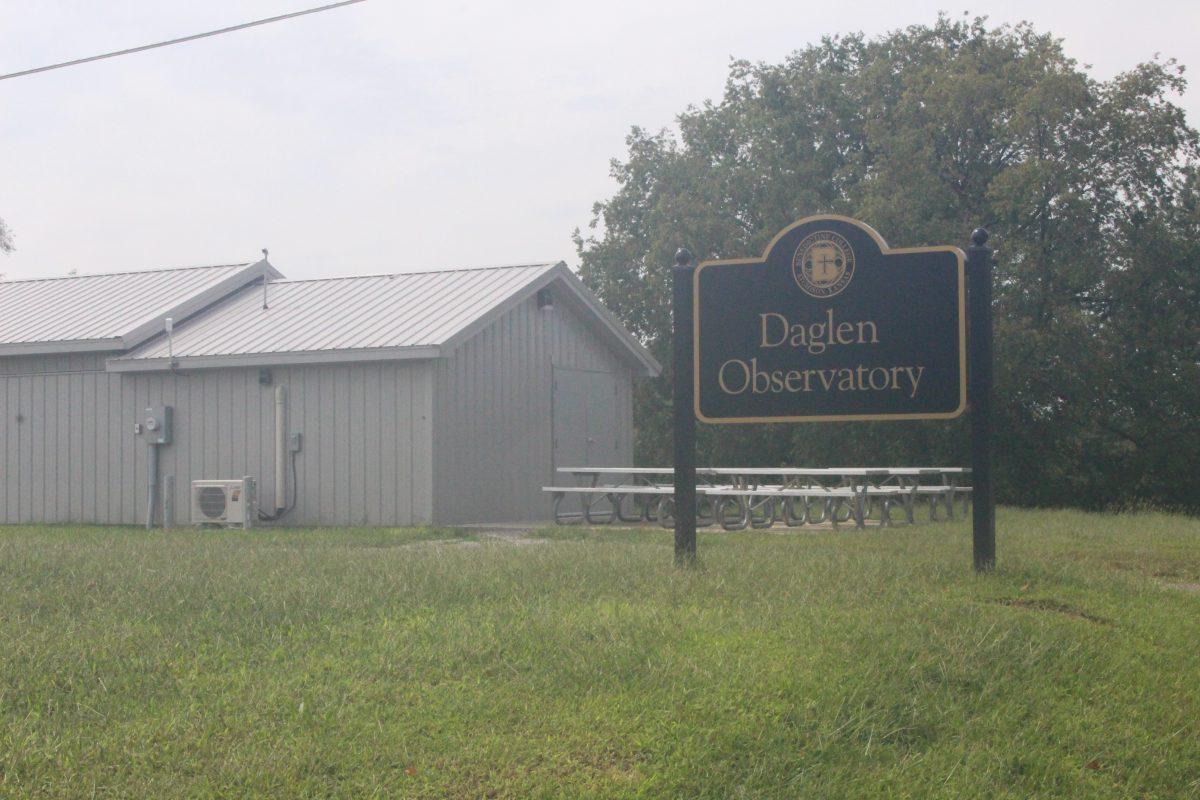
Students have been able to view the beautiful
starry sky in Daglen Observatory for about two years since it became
operational in 2017. Now the students can go beyond just observing the stars
and onto collecting scientific data.
Daglen Observatory has begun to take scientific
data on a particular star in the sky, and the students are the ones collecting
it.
This data is to be collected by a spectrograph.
A spectrograph takes light from a star and separates it by wavelength, causing
different colored light to go in different directions, much like shining light
through a prism.
Dr. Ryan Maderak, director of the astronomy
department, is excited to begin collecting data with the observatory.
“After the end of the spring semester, I really
concentrated my efforts on getting that spectrograph set up, and so we were
finally able to take real science data in July,” Maderak said.
The spectrograph came from a generous donor name
Joe Daglen, who is also responsible for the funding of the observatory and
holds its namesake.
“Back in December of this past year and said ‘I
want to give you the money so you can get a spectrograph,” Maderak said.
The star that is being tracked in called AC
Herculis a type of variable star, which is a star where its brightness
changes.
“This type does that in what is sometimes called
a ‘camels hump’ pattern, so it expands, then it contracts a little bit and then
it expands again and then it contracts all the way,” Maderak said.
The ability to gather data on the variable star
is incredibly profound. In the past, spectrographs for smaller telescopes have
not been able to produce high-quality images.
This star also holds some value among Maderak
and why he chose it.
“My predecessor Dr. Scott Baird, professor
emeritus who taught me here, he actually wrote his dissertation on the star
that we have been observing,” Maderak said. “It’s, in part, because of his
interest in this particular type of variable star that I got interested in it
years ago. ”
The spectrograph can provide the students with
hands-on experience that is available right near their college. Josh
Heinerikson, an Astronomy and Physics Major, has been collecting the data since
the beginning in July.
“My job at the observatory is to take the
calibration shots beforehand, and then take the actual data exposures,”
Heinerikson explained.
Heinerikson is grateful for the opportunity to
gather the data on the star and how it helps both him and the students.
“It gives the students a better understanding of
what is happening out there, in the solar theater,” Heinerikson states, “It’s
definitely helped me to understand solar mechanics better.”
Maderak’s biggest hope with this star is that
his students can have publishable data attributed to them.
“We are hoping to understand how this kind of
variable star works, that will be a genuine contribution to the field of
astronomy and the biggest accomplishment is that our students get that
experience,” Maderak said.